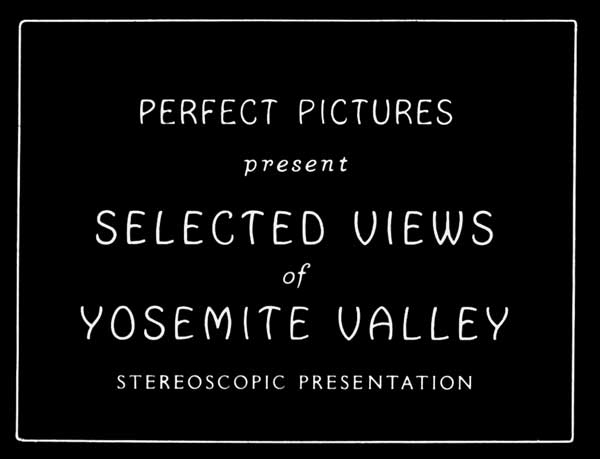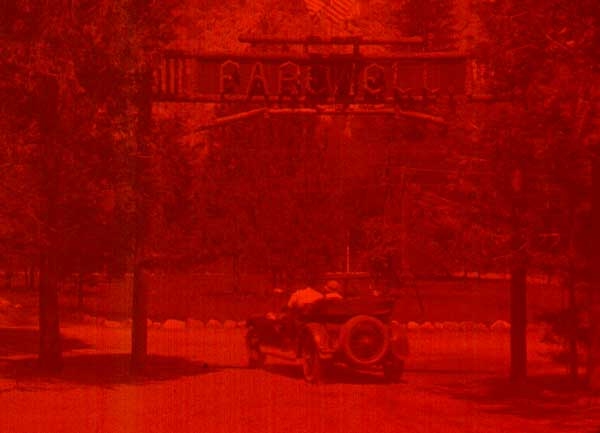The holy grail of 3D!
First the bad news: we only have one eye, we do not have a stereo pair.
The good news?
We have one eye of a PORTION of the earliest extant 3-D film!
Perfect Pictures of Los Angeles, California produced a short in 1922 about Yosemite that preceded their 3-D feature (the world’s FIRST 3-D feature) THE POWER OF LOVE. At the Los Angeles screening, Sid Grauman was said to have offered to book the Yosemite short for his new Egyptian Theatre although for technical reasons, he did not. More information can be found here: First 3-D Feature
In February 2010, Film Archivist/historian Jack Theakston tracked down a person in California with a reel of nitrate film from the 1920’s. What jumped out was the word “stereoscopic” in the description. The reel was quickly acquired by the Archive.
3-D expert Dan Symmes took it to YCM labs in Burbank and examined with eager eyes. He determined the reel was a compilation of Yosemite-like shots from various sources (most of the other footage was edge-dated 1919). But the first segment, dated 1922, had a very clear title (only a few frames long) that told us the story:

The footage is nitrate and very brittle but has no deterioration.
The first scene:
Dan was initially puzzled by the coloring. He wrote the following report: “At first glance, it looked like the orange color mask of modern color negative film. Then, it was the ANSWER to one of the most basic questions about this seminal film: what was the “encoding” for viewing the anaglyph? Colored filters on front of the lenses? Tinting/toning? Nobody would know this, 88 years later.
The film is DYED red. Simple. So there would have been the other eye dyed CYAN (or blue or green). This would have produced a very dark composite image (toning would have been superior) but these weren’t sophisticated 3-D people. They were the PIONEERS and dying vs. toning was a simple idea.
We believe, based on the written evidence on this film, that only one print was made. It was shown only at two private, invitational screenings; Los Angeles on September 27, 1922 and sometime later in New York City.
Thus, this is THE print. UNIQUE. And SO historically important.
It’s interesting to think Fairall and company would have shot the short first in order to prove the camera and process BEFORE expending a much larger sum for the feature. Thus, it would appear this film predates the feature chronologically.
So we now know the encoding, and have the only KNOWN surviving piece of this film. Sadly, the odds of finding the other eye are VERY slim, since this piece was cut together decades ago by a travel enthusiast who had no interest in what the film was.”
Historic finds like these are truly what the 3-D Film Archive is all about. Perhaps the other cyan side is out there somewhere, waiting to be found and matched to this eye? Keep checking those basements, attics and storage vaults!





